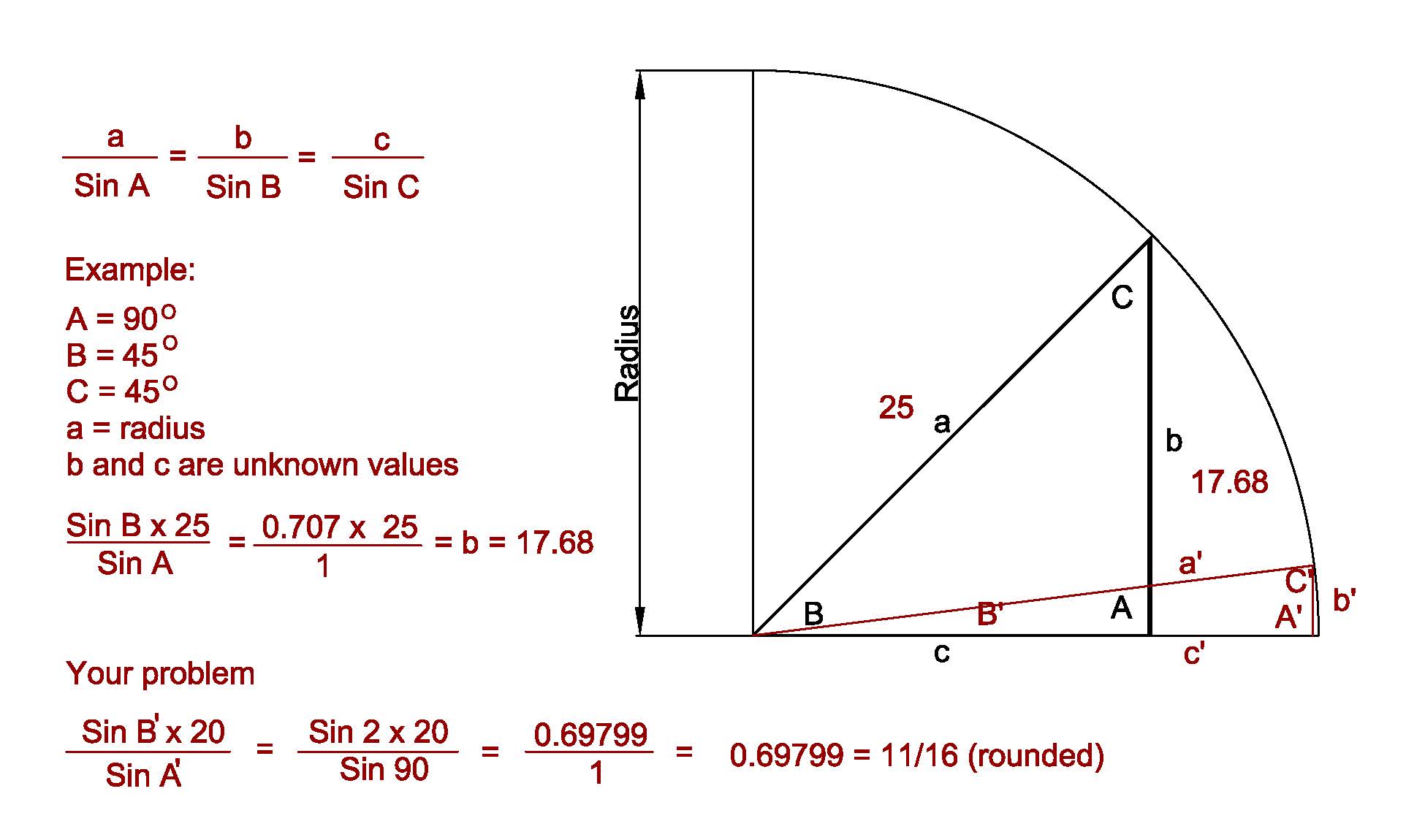 SOH
SOH -
CAH -
TOA anyone?
It's short for: "
Some
Old
Hippy
Caught
Another
Hippy
Trippin'
On
Acid"












Some more:
Sailors
Often
Have
Curly
Auburn
Hair
Till
Old
Age.

And:
Some
Old
Horses
Can
Always
Hear
Their
Owners
Approach.

There are probably more representations but, I'm going to stop here...









No seriously folks, this acronym stands for:
Sine =
Opposite ÷
Hypotenuse
Cosine =
Adjacent ÷
Hypotenuse
Tangent =
Opposite ÷
Adjacent.
I'm not going to explain anymore than what has already been shown to you and there's no need to be redundant here... The only advice I have to give is if you're still not confident enough to use what has been described to you, then here's a link which in itself is easy enough to understand that will help you understand better how to solve triangle problems. I would also second Floyd's recommendation on buying the book he endorsed because it is a well written one for a student to become more comfortable and confident in using trigonometry to find missing dimensions whether they be linear or angular...
I would also recommend this link to use for learning how to become more familiar with Trigonometry and for practice solving triangles as well as learn more about the 3 main functions and the secondary functions even if they're not used as often...
This link offers tips for example on how to "Solve" triangles... "Solving" means finding missing sides and angles... When we know any 3 of the sides or angles... We can find the other 3*... *( Except for 3 angles, because we need at least one side to find how big the triangle is.) As well as other tips to help you become more comfortable with Trigonometry:
http://www.mathsisfun.com/algebra/trig-solving-triangles.htmlThis link will also offer Triangle Solving Practice in another link which can be found in the link I just posted... The bottom line is this, it's one thing to solve the problems by pushing buttons on a calculator and another to understand what, why and how to solve problems where trigonometry is concerned like Floyd also mentioned... Finally, Al's post is very descriptive and very useful for you also to familiarize yourself further with the methods used to solve a variety of triangular problems... Once you get used to using the various functions and applying the tips given, you should not have any problems finding missing angles and sides. Enjoy!


Respectfully,
Henry


























